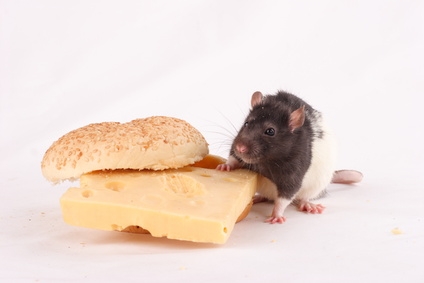
Being common domestic pets, it's easy to think that guinea pigs (also called 'cavies') are native to most countries of the world. But in actual fact they come from a very small area in South America, and have only been found outside it for a few hundred years.
Let's explore the guinea pig's history, including the important role it plays in South American culture, what it is used for, and how it has grown to become such a popular animal in such a large number of countries.
Although their name might suggest otherwise, guinea pigs are not from Guinea. In fact, they are originally from South America, specifically in and around the Andes mountain range.
As long ago as 5000BC guinea pigs were kept as domestic animals, much as they are nowadays. In those days though, they were central to society, and were considered to be much more than simply pets.
In these places, guinea pigs are used in ceremonial and religious rituals, and are considered to be a highly sacred creature. They are worshipped, and can be found in the religious art of South American tribes up to this day.
Doctors still use guinea pigs in traditional forms of healing. When a person is taken ill, a guinea pig is rubbed along their body to help diagnose certain illnesses. Later, this same guinea pig is cut open and its organs examined as a sign of whether the patient has been cured.
They are also kept as domestic pets, though most people keep them primarily as a source of food, in much the same way that we might keep chickens. They live among the family, feeding off their leftover food, until they are large enough to be eaten.
Guinea pigs were brought to Europe by explorers and travellers in the 1500s. Because of their exotic nature, they rapidly became popular pets among the well-to-do, and it was seen as a status symbol if you were able to afford one.
Since then, guinea pigs have continued to grow in popularity, and have been taken to even more places, to the point where they can now be found in almost every country of the world.
Luckily they continue to grow in popularity, with more and more people discovering just how much fun they are to own.
 How to Make a Hamster Maze
How to Make a Hamster Maze
How to Make
How to Make a Hamster Maze
How to Make a Hamster Maze
How to Make
 What Do Frogs Eat in the Desert?
What Do Frogs Eat in the Desert?
What
What Do Frogs Eat in the Desert?
What Do Frogs Eat in the Desert?
What
 How to Safely Treat Hamster Fleas
How to Safely Treat Hamster Fleas
How
How to Safely Treat Hamster Fleas
How to Safely Treat Hamster Fleas
How
 The Best Pet Rodents
The Best Pet Rodents
The Best Pet Rode
The Best Pet Rodents
The Best Pet Rodents
The Best Pet Rode
 Cholecalciferol in Rat Poison
Cholecalciferol in Rat Poison
Cholecal
Cholecalciferol in Rat Poison
Cholecalciferol in Rat Poison
Cholecal
Copyright © 2005-2016 Pet Information All Rights Reserved
Contact us: www162date@outlook.com